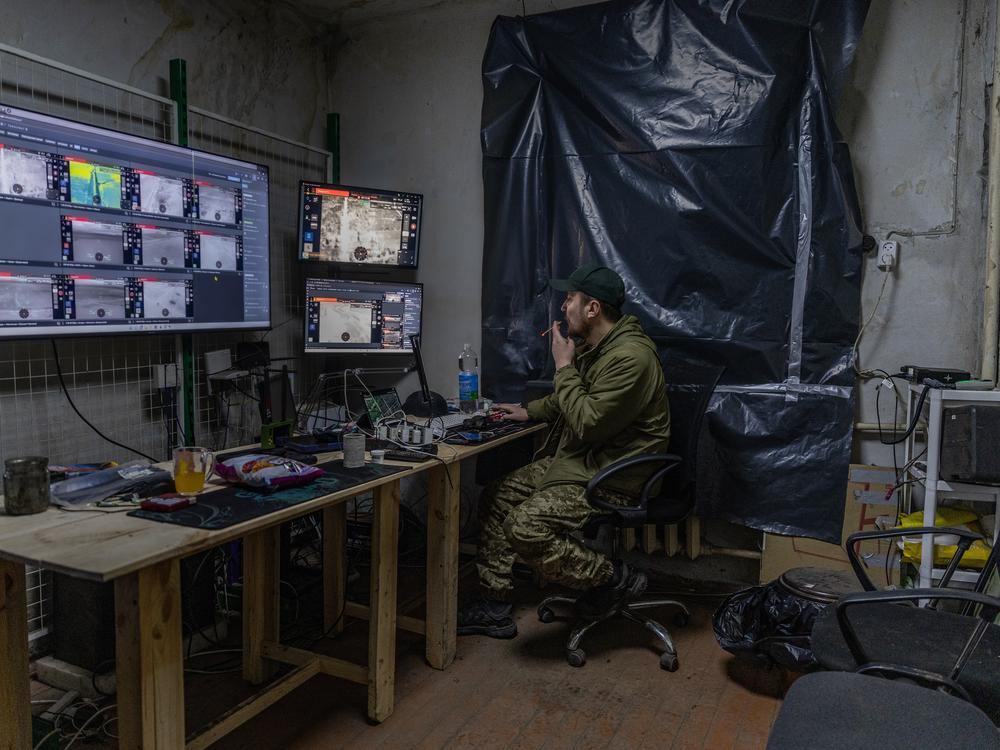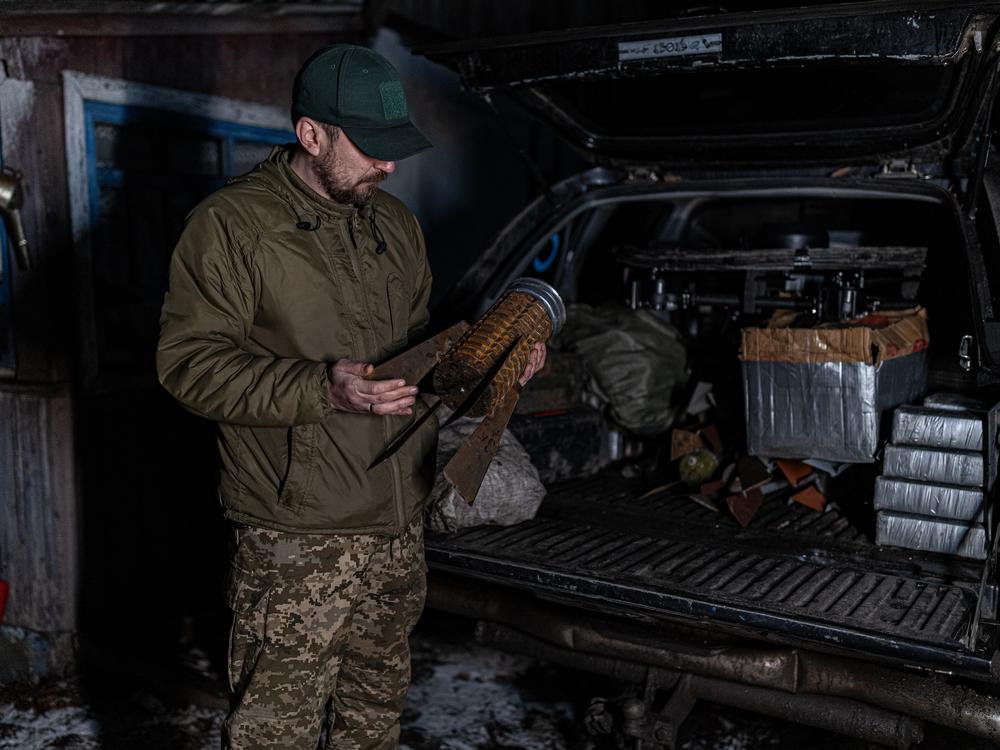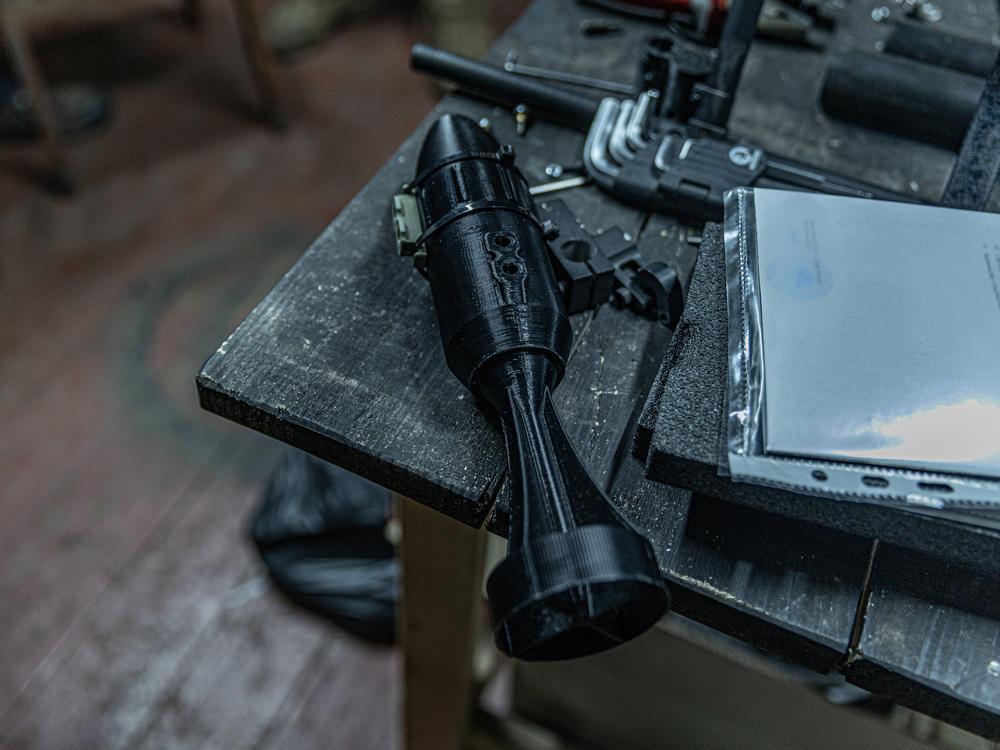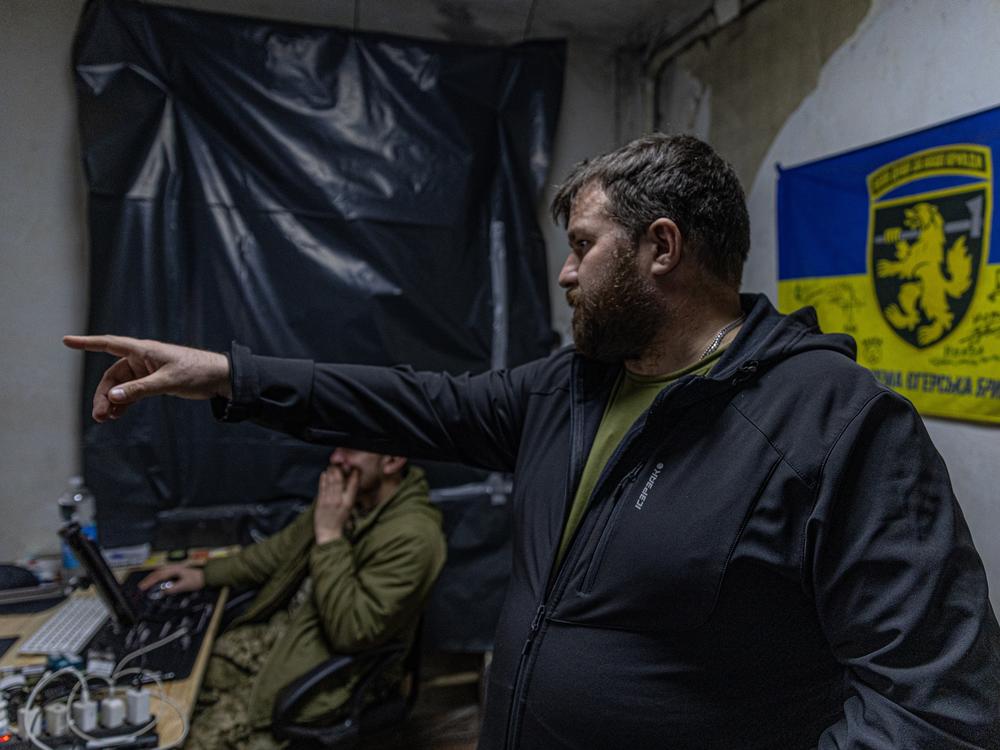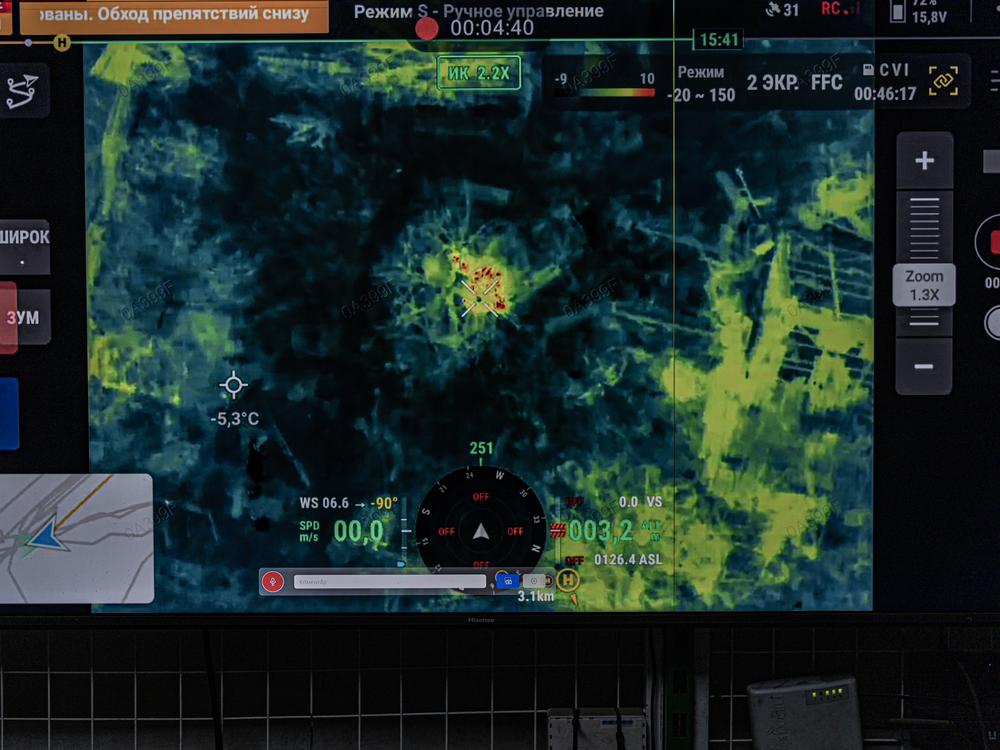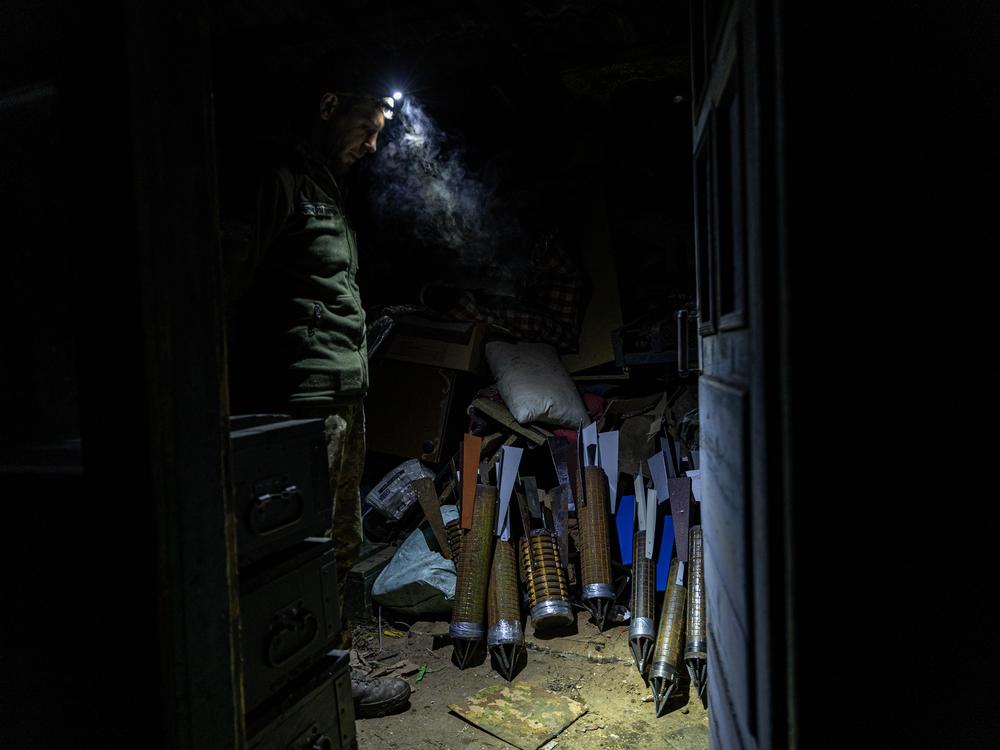Section Branding
Header Content
Inside a secret Ukrainian drone command post, where Russian soldiers are seen as prey
Primary Content
NEAR POKROVSK, Ukraine — In a small town outside Pokrovsk, a city in eastern Ukraine under siege by Russia, a soldier guides an armored vehicle down a muddy, snow-swept lane. In the early winter darkness, lights flash on the horizon as the two armies trade artillery fire.
In the driveway of a rundown house, two soldiers work quickly under the glow of headlamps, loading weapons from a shed into the back of a battered truck. "They're going to take one of our drones into the field," says a 35-year-old military technician named Yurii.
For security reasons, Yurii declines to be photographed and shares only his first name. He says he was a video game programmer before enlisting in Ukraine's army earlier this year. Now he's part of a drone unit supporting Ukraine's 68th Separate Jaeger Brigade, which is charged with helping defend Pokrovsk.
The strategic coal-mining city and transportation hub is partially encircled by a much larger force of Russian infantry and artillery. Fighting here began last spring and it's been bitter and costly to both sides. But so far Ukrainian defenders have been able to hold out, in part because of the deadly effectiveness of Ukraine's drone pilots.
Yurii's job is to build and repair some of the most lethal aerial drones flying over the battlefield. He watches as the crew lifts two of his five-bladed drones, the size of small lawnmowers, into the truck. "They are not the newest technology but they are kind of our workhorse," he says of this model.
Next, the men cautiously load crude but deadly-looking home-made bombs. They resemble rusted pipes fitted with fins and knuckles of steel.
"We'll fix these to the drone and then drop them tonight," says one of the soldiers, a 34-year-old drone platoon commander who goes by the military call-sign Sonik.
They drive off while Yurii leads the way inside the workshop - crowded with technicians and soldiers - where these weapons are built and repaired. In one corner, a 3-D printer buzzes away, fashioning replacement parts for damaged drones. According to Yurii, the location of drone cells like this one along the eastern front is a carefully guarded secret.
"This would be a priority target if you would reveal [our location to the Russians], so please don't," he says.
For Ukraine, a manpower shortage means growing reliance on remote warfare
Facing a desperate manpower shortage, Ukraine has turned increasingly to unmanned aerial drone units like this one, as well as remote-controlled combat vehicles that operate on the ground. The goal is to slow Russia's advance and weaken their fighting power while sacrificing as few Ukrainian soldiers as possible.
By one metric, the strategy is working. A non-profit group called the Institute for the Study of War [ISW] found Russia is sacrificing nearly 60 soldiers, killed and wounded, for every square kilometer of ground captured in eastern Ukraine. ISW reported that Russia may have lost as many as 3,000 casualties in the Pokrovsk area alone during one two-week period earlier this month.
A short distance away in a second house, windows carefully covered with black plastic, the drone command center's operational staff is gearing up for the night's deadly work. It's a gritty place that looks like a rustic hunting camp packed with humming computers and big flat-screen TVs.
"I watch 16 to 18 broadcasts [transmitted] from our friendly drone pilots," says the team's duty officer, a bearded 37-year-old man who goes by the call-sign Pip. It's his job to help pilots target Russian units more quickly and efficiently.
He says his team can also help pilots, working close to the front lines, operate in concert with other types of units, including Ukrainian infantry fighting from trenches and fortifications.
"If enemy infantry approaches our positions, our [soldiers] open fire with machine guns and the enemy lies down, they no longer pay attention to our drones, and then we finish them off, we kill them," Pip says, describing one of the tactics commonly in use by his men.
"We try to take out as many [Russians] as we can"
Soon, radios crackle to life as pilots begin checking in. Ukraine's drones, heavy with bombs, hover in the darkness over fields and abandoned farmhouses. Their cameras "see" in infrared, looking for the heat signature of human bodies against the snowy ground. After a short wait, one of the pilots sends back live video of a Russian soldier, his form clearly visible.
As the drone closes in, the Russian can be seen creeping forward toward the Ukrainian lines, apparently unaware of the danger overhead. Then one of the drone's bombs is released, visible as it tumbles down, scoring a direct hit. A flare of light erupts on the screen. When it fades, the Russian lies still in the snow.
Pip nods with satisfaction at his pilot's accuracy. "That was close, it was very close," he says. There's a brief celebration in the command center before the team moves on to coordinate other attacks.
According to Pip, each kill they score tonight means one fewer Russian who will threaten Ukraine's defenses. "We are doing this every day, nonstop," he says.
The brutal reality, however, is that both sides are using drones more intensely and more effectively as this war grinds on. Remote-controlled airplanes fly hundreds of miles to target cities, military installations and factories far from the front lines. Small, deadly drones swarm over frozen trenches, fields and city streets in places like Pokrovsk, killing Russians and Ukrainians alike.
Yurii, the former video game programmer, says he believes Ukraine's operation is smarter and more lethal than the Russian drone force. He thinks this unit's attacks are weakening Russia's advance, forcing Moscow to pay a heavy price.
But he also says it's clear remote controlled weapons won't be enough to stop the much larger Russian army entirely.
"We try to take out as many [Russians] as we can before they reach our positions," Yuri says. "But sometimes they're just too many. It's impossible to hold."
Polina Lytvynova, a Ukraine field producer for NPR, contributed reporting to this story.
